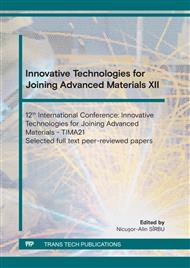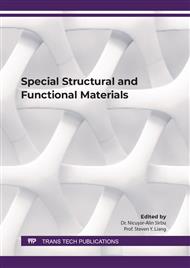[1]
Information on http://data.europa.eu/eli/dir/2019/904/oj.
Google Scholar
[2]
Information on https://www.statista.com/statistics/254668/size-of-the-global-antiperspirant-and-deodorant-market/.
Google Scholar
[3]
Information on https://mhplastics.com/product-range/50ml-roll-on-deodorant-cylindrical/.
Google Scholar
[4]
Information on https://www.wppg.com/products/.
Google Scholar
[5]
Information on https://www.scientificamerican.com/article/new-artificial-eye-mimics-a-retinas-natural-curve/.
Google Scholar
[6]
Information on http://www.socialifechicago.com/snarkitecture-beach-art-installation-coming-to-chicago-navy-pier/.
Google Scholar
[7]
Information on http://www.silverlakereservoirs.org/bird-balls-gallery.
Google Scholar
[8]
Information on https://www.precisionplasticball.com/products/hollow-plastic-precision-balls.
Google Scholar
[9]
W.G. Mears, U.S. Patent 4,679,581A. (1986).
Google Scholar
[10]
P. Schmidt, D. Hindle, R. Goede and P. Stoelben, U.S. Patent 20,170,079,403A1. (2015).
Google Scholar
[11]
P. Stoelben, P. Schmidt and R. Schawo, U.S. Patent 20,170,013,938A1. (2013).
Google Scholar
[12]
Information on https://www.youtube.com/watch?v=j34FEO9h-y4.
Google Scholar
[13]
Information on https://www.tongdamachine.net/application/plastic-toy-making-machine/?gclid=Cj0KCQjw_fiLBhDOARIsAF4khR2Yq_kORrQZO6vq6UDORa1nBUEDFOSrwnIliQos9-kILLvwrQiClJgaArltEALw_wcB.
Google Scholar
[14]
D.F. Teușdea, N.A. Sîrbu, M. Vodă, O. Oancă, E.C. Lovasz, Research on Manufacturing Deo-Roll Balls by Infrared Radiation Welding, Advanced Materials Research.1557 (2020) 21-30.
DOI: 10.4028/www.scientific.net/amr.1157.21
Google Scholar
[15]
D. Grewell, A. Benatar, Welding of plastics: fundamentals and new developments, International Polymer Processing. XXII (2007) 43-60.
DOI: 10.3139/217.0051
Google Scholar
[16]
Y.S. Chen, A. Benatar, Infrared welding of polypropylene, the 53 rd annual technical conference of the society of plastics engineers-the plastics challenger: a revolution in education. ANTEC 95, 1995, pp.1235-8.
Google Scholar
[17]
H. Potente, P. Michel, M. Heil, Infrared radiation welding-a method for welding high-temperature resistant thermoplastics. The 49th annual technical conference of the society of plastics engineers-plastics: rendez-vous with excellence. ANTEC 9, (1991, pp.2502-4.
Google Scholar
[18]
M.N. Watson, M.G. Murch, Recent developments in hot plate welding of thermoplastics, Polymer Engineering and Science. 29 (1989) 1382-6.
DOI: 10.1002/pen.760291909
Google Scholar
[19]
B. Poopat, A. Benatar, J.B. Park, Comparative study of contact and non-contact hot plate welding of HDPE, The 58th annual technical conference of the society of plastics engineers-plastics the magical solution. ANTEC 2000 (2000) 1117-21.
Google Scholar
[20]
D.F. Teușdea, E.C. Lovasz, Vodă M., N.A. Sîrbu, I. Maniu, J.P. Bizet, Study on High Productivity Manufacturing Line for Deo Roll Balls, New Advances in Mechanisms, Mechanical Transmissions and Robotics. 88 (2021) 201-211.
DOI: 10.1007/978-3-030-60076-1_18
Google Scholar
[21]
O. Balkan, H. Demirer, A. Ezdesir, H. Yildirim, Effects of welding procedures on mechanical and morphological properties of hot gas butt welded PE, PP, and PVC sheets, Polymer Engineering and Science. 48 (2008) 732-46.
DOI: 10.1002/pen.21014
Google Scholar
[22]
S. Haque, M.A. Siddiqui, Plastic Welding: Important Facts and Developments, American Journal of Mechanical and Industrial Engineering.1 (2) (2016) 15-19.
Google Scholar
[23]
D.F. Teușdea, O. Oancă, M. Vodă, N.A. Sîrbu, E.C. Lovasz, Research on Manufacturing Deo-Roll Balls by Ultrasonic Welding, Advanced Materials Research. 1557 (2020) 58-72.
DOI: 10.4028/www.scientific.net/amr.1157.58
Google Scholar
[24]
S.R. Raza, S.A. Khan, M.P. Mughal, Optimizing the weld factors affecting ultrasonic welding of thermoplastics. The International Journal of Advanced Manufacturing Technology. (2019).
DOI: 10.1007/s00170-019-03681-7
Google Scholar
[25]
J. Lin, S. Lin, Study on a Large-Scale Three-Dimensional Ultrasonic Plastic Welding Vibration System Based on a Quasi-Periodic Photonic Crystal Structure. Crystals. 10(1) (2020).
DOI: 10.3390/cryst10010021
Google Scholar
[26]
V.K. Stokes, Vibration welding of thermoplastics, Analysis of the welding process. Polymer Engineering and Science. 28 (1998) 728-39.
Google Scholar
[27]
P. Tappe, H. Potente, New results on the spin welding of plastics. Polymer Engineering and Science. 29 (1989) 1655-60.
DOI: 10.1002/pen.760292306
Google Scholar
[28]
P.G. DeGennes, Reptation of a polymer chain in the presence of fixed obstacles, Journal of Chemical Physics. 55 (1971) 572.
Google Scholar
[29]
B. Baudrit, S. Horlemann, E. Kraus, CT for non-destructive testing of plastic joints. German-Austrian-Danish Workshop on Industrial CT Scanning, Munich, (2013).
Google Scholar
[30]
Information on: https://www.zetec.com/products/ultrasound/?gclid=Cj0KCQjwrJOMBhCZARIsAGEd4VFydHKo_onkDAUf6RIzMYU0Se8_ry3SPI58oBOb2E8wmCWuRjPB8ZkaArCGEALw_wcB.
Google Scholar
[31]
Information on http://kamweld.com/index.php?route=product/product&path=7&product_id=1861.
Google Scholar
[32]
ASTM D638-14:2014. Standard Test Method for Tensile Properties of Plastics; ASTM International: West Conshohocken, PA, USA, (2014).
Google Scholar
[33]
S. Damodaran, T. Schuster, R. Karsten, S. Abhishek, R. Brüll, Neda Stöhr, Measuring the orientation of chains in polypropylene welds by infrared microscopy: A tool to understand the impact of thermo-mechanical treatment and processing. Polymer 60 (2015) 125-136.
DOI: 10.1016/j.polymer.2015.01.046
Google Scholar



